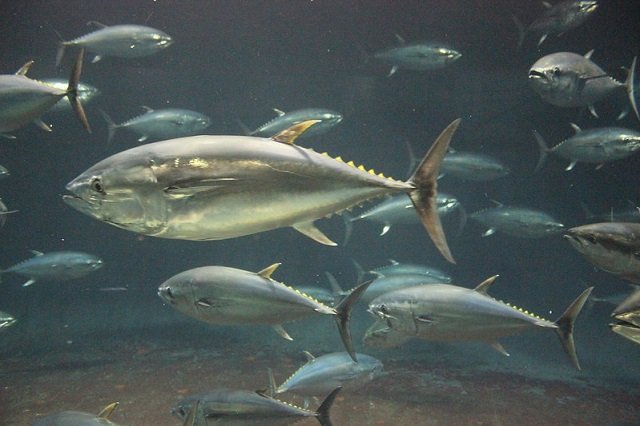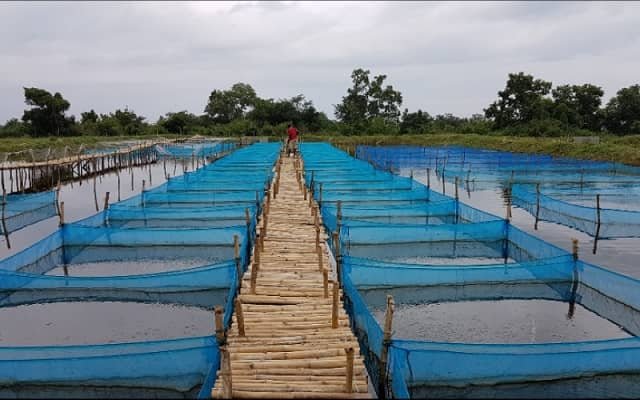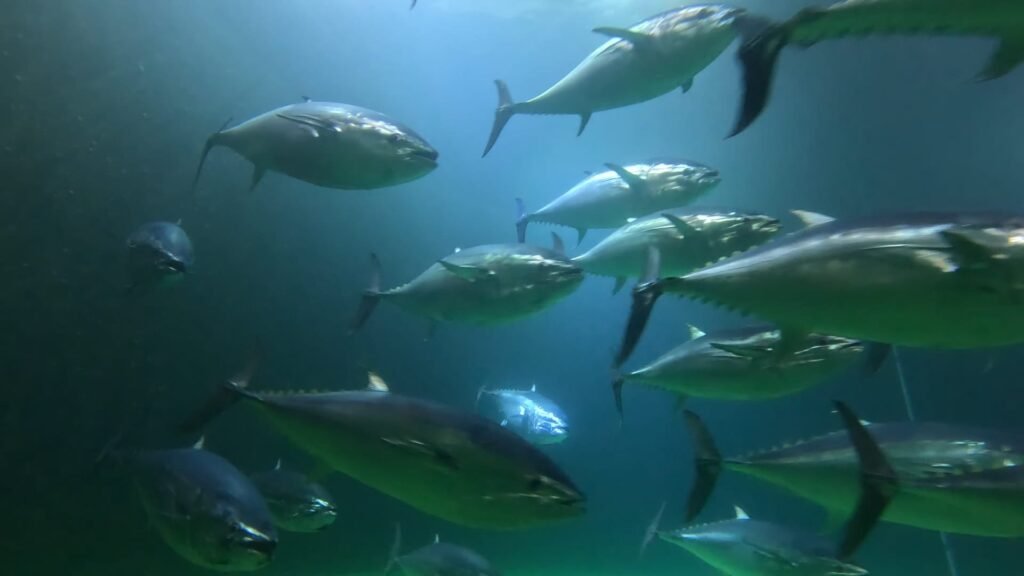
The reproduction of Atlantic bluefin tuna (Thunnus thynnus) in a controlled, land-based environment is one of the most significant advances in modern aquaculture. This milestone, achieved at the Infrastructure for the Control of Tuna Reproduction (ICRA) of the Oceanographic Center of Murcia (IEO-CSIC), opens new frontiers for the species’ sustainable production and scientific research. To understand the magnitude of this achievement, the challenges overcome, and the road that still lies ahead, we spoke exclusively for AquaHoy with Dr. Fernando de la Gándara, a researcher at the IEO and one of the key figures behind this project. Throughout this interview, Dr. de la Gándara reveals the technical secrets, the strategic advantages of tank-based rearing, and the future goals to make bluefin tuna farming a commercial reality.
The first onshore spawning: A global milestone
- 1 The first onshore spawning: A global milestone
- 2 Tank rearing vs. sea cages: Strategic advantages
- 3 Bottlenecks for commercial scaling
- 4 From tank to ocean: Knowledge for fisheries management
- 5 The critical challenge of larval survival
- 6 Animal welfare: Mitigating stress in the pelagic giant
- 7 The future of research: Upcoming objectives at ICRA
- 8 Entradas relacionadas:
Dr. de la Gándara, achieving the first reproduction of Atlantic bluefin tuna (Thunnus thynnus) in onshore facilities was a global milestone. What was the most complex technical or biological challenge you had to solve at ICRA to get the tuna to finally spawn—something never before achieved in this type of controlled environment?
Bluefin tuna is a species that lives in a three-dimensional ocean without obstacles. For over two decades, it has been possible to keep large individuals (over 150 kg) in floating cages. However, juveniles “forget” they are in a confined environment, and at the slightest sign of danger (for example, an unexpected noise), they try to escape and collide with the net or the walls of a tank, dying on impact. This, combined with the fact that it takes over 4 years for the tuna to become reproductively mature, has made it a significant challenge to maintain bluefin tuna individuals in onshore tanks for more than 4 years and achieve their reproduction in captivity.
Tank rearing vs. sea cages: Strategic advantages
The IEO had already closed the biological life cycle in sea cages in 2016. What fundamental strategic and operational advantages does rearing in onshore tanks (at ICRA) offer compared to sea cages? Specifically, how does it improve control over the reproductive process, biosecurity against pathogens, and the reduction of direct environmental impact on coastal ecosystems?
Indeed, together with my colleague Dr. Aurelio Ortega, we successfully closed the life cycle of bluefin tuna in July 2016 with 5- and 6-year-old specimens in floating cages located in the concession of the Ricardo Fuentes e Hijos business group, with whom we have maintained a close collaboration for over two decades. However, due to a terrible storm, the cage holding those specimens was destroyed, and the tuna escaped. We lost 6 years of work, but fortunately, the knowledge gained during that period was not lost. That’s the sea for you—it’s unpredictable.
It is true that the tuna that Ricardo Fuentes keeps in its fattening facilities spawns spontaneously and, as a result of our collaboration with the company, we source fertilized eggs from their cages. However, the availability of these eggs is not guaranteed, so we consider this option complementary to reproduction in onshore tanks. Furthermore, the eggs obtained from sea cages pose a serious problem: they come mixed with eggs from other species (in most cases indistinguishable from bluefin tuna eggs) whose larvae grow faster than tuna larvae and prey on them.
All of this led us to design and build the facility for the control of bluefin tuna reproduction (ICRA), sheltered from the inclemencies of the sea, and where the eggs obtained are purely from bluefin tuna. Likewise, total control over water quality allows the tuna confined there to be protected from pathogens.
Stay Always Informed
Join our communities to instantly receive the most important news, reports, and analysis from the aquaculture industry.
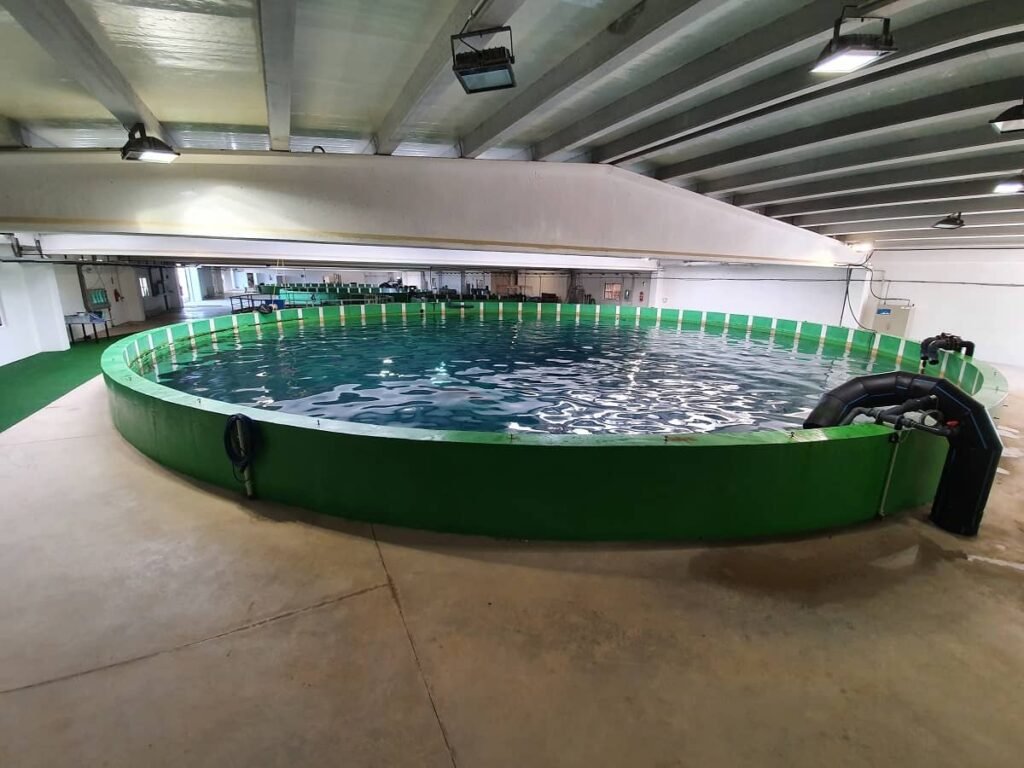
Bottlenecks for commercial scaling
One of ICRA’s major goals is the sustainable production of bluefin tuna, independent of wild fisheries. Realistically, what are the main bottlenecks today (e.g., energy costs, larval feeding, space) preventing this technology from being scaled to a commercial level that can truly alleviate pressure on wild populations?
Pressure on natural bluefin tuna populations has been drastically reduced since the implementation of the species’ recovery plan by ICCAT in 2006. Therefore, it is not currently under threat, although maximum allowable catch limits remain in place. But just as with other species like sea bream, sea bass, turbot, or salmon, aquaculture offers a productive activity complementary to fishing. The case of bluefin tuna is no different, and in the future, farmed tuna will share market presence with wild-caught tuna.
However, at present, the farming technique for this species still faces significant challenges to be considered commercially scalable. The most important issue, without a doubt, is the high mortality rate of juveniles (between 10 g and 5 kg), which exceeds 90%. That is why there is still a long way to go in this area, and at the IEO, we are dedicated to it. Nevertheless, given the interest that bluefin tuna aquaculture generates, several companies are collaborating with us to make its production profitable. Among them, the company NEXTUNA is particularly noteworthy.
From tank to ocean: Knowledge for fisheries management
The project also aims to generate knowledge applicable to fisheries management. What have you learned about the physiology or reproductive behavior of bluefin tuna in this hyper-controlled environment that was impossible to learn from studying their wild counterparts, and that could be useful for, say, better defining fishing closures or protecting key spawning areas?
Many aspects can be studied in a controlled environment that are impossible to address in the wild. For example, conducting experiments on larval rearing by testing different feeds, external conditions, growth rates, metabolism, diseases, and a host of other factors. Knowledge of these can undoubtedly benefit the management of natural stocks. It is worth highlighting the importance of these studies in a changing environment due to climate change—for instance, testing the behavior and tolerance of bluefin tuna eggs and larvae to variations in temperature, salinity, and pH. It also allows us to define the point at which juveniles develop endothermy or to estimate their metabolic rates under different conditions.
The critical challenge of larval survival
You have previously reported obtaining millions of fertilized eggs. However, the larval stage is extremely critical. What are the main challenges you now face in ensuring a high survival rate for these bluefin tuna larvae in their first weeks of life, and what innovations in feeding and handling are you applying at this stage?
Larval survival to the 10 g, 45-day-old juvenile stage is still very low: less than 1%. This value has indeed remained stable over the last 10 years, and by establishing a suitable rearing strategy, it allows for the production of a significant number of juveniles. However, our main objective at this moment is not just larval survival but, fundamentally, the quality of the juveniles produced. As I mentioned, the main obstacle to the profitability of bluefin tuna farming right now is the high mortality rate in the phase from a 10g juvenile (45 days old) until it reaches 5 kg, in about a year. We believe that the quality of the juveniles produced is largely to blame for this high mortality, so we are working on that aspect of larval rearing, primarily concerning feeding.
Animal welfare: Mitigating stress in the pelagic giant
Keeping a large pelagic fish, accustomed to migrating thousands of kilometers, in tanks—even large ones—raises questions about its welfare. What objective indicators do you use to measure the welfare of the broodstock at ICRA, and what environmental enrichment or management measures do you apply to mitigate the chronic stress associated with captivity?
The experience gained over the thirty years that bluefin tuna farming has been developed in floating cages in Spain allows us to affirm that the welfare of farmed tuna is acceptable. We have observed that at the slightest sign of stress, the tuna stop eating, so active feeding can be accepted as an indicator of welfare. Furthermore, it has been noted that confined tuna show no signs of wanting to migrate during the seasons when this phenomenon occurs. In our case, to promote their welfare, we try to provide them with the most suitable food, in the quantity and quality they require to stay healthy.
The future of research: Upcoming objectives at ICRA
Following this success and with the consolidation of ICRA as a Unique Scientific and Technical Infrastructure (ICTS), what are the next major research objectives for your team in the next 5 years? Will you focus on genetic selection to optimize the species for aquaculture, or perhaps on developing fully sustainable diets that do not rely on fishmeal?
As I have mentioned, our main objective right now is to work on improving the quality of the juveniles produced, which in turn will lead to an increase in survival during the 10g to 5 kg phase, thereby unlocking the profitability of producing this species in aquaculture. Being designated as an ICTS (www.icar.ieo.es) allows us to host Spanish and foreign research teams in our facilities to work with us on this and other lines of research. All of this is so that, in the not-too-distant future, we can have bluefin tuna from sustainable aquaculture in our fish markets (alongside wild-caught fish), just as we do with other species like sea bream, sea bass, turbot, or salmon.
Contact
Fernando de la Gándara García
Centro Oceanográfico de Murcia
Instituto Español de Oceanografía (IEO)
Consejo Superior de Investigaciones Científicas (CSIC)
Calle el Varadero 1, 30740 San Pedro del Pinatar, Murcia, España
Teléfono: +34 968 18 05 00
Email: fernando.delagandara@ieo.csic.es
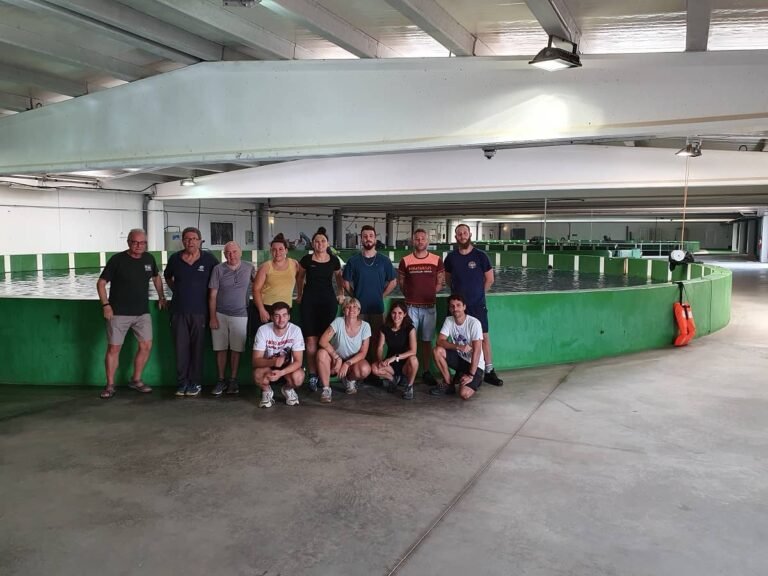
Editor at the digital magazine AquaHoy. He holds a degree in Aquaculture Biology from the National University of Santa (UNS) and a Master’s degree in Science and Innovation Management from the Polytechnic University of Valencia, with postgraduate diplomas in Business Innovation and Innovation Management. He possesses extensive experience in the aquaculture and fisheries sector, having led the Fisheries Innovation Unit of the National Program for Innovation in Fisheries and Aquaculture (PNIPA). He has served as a senior consultant in technology watch, an innovation project formulator and advisor, and a lecturer at UNS. He is a member of the Peruvian College of Biologists and was recognized by the World Aquaculture Society (WAS) in 2016 for his contribution to aquaculture.
